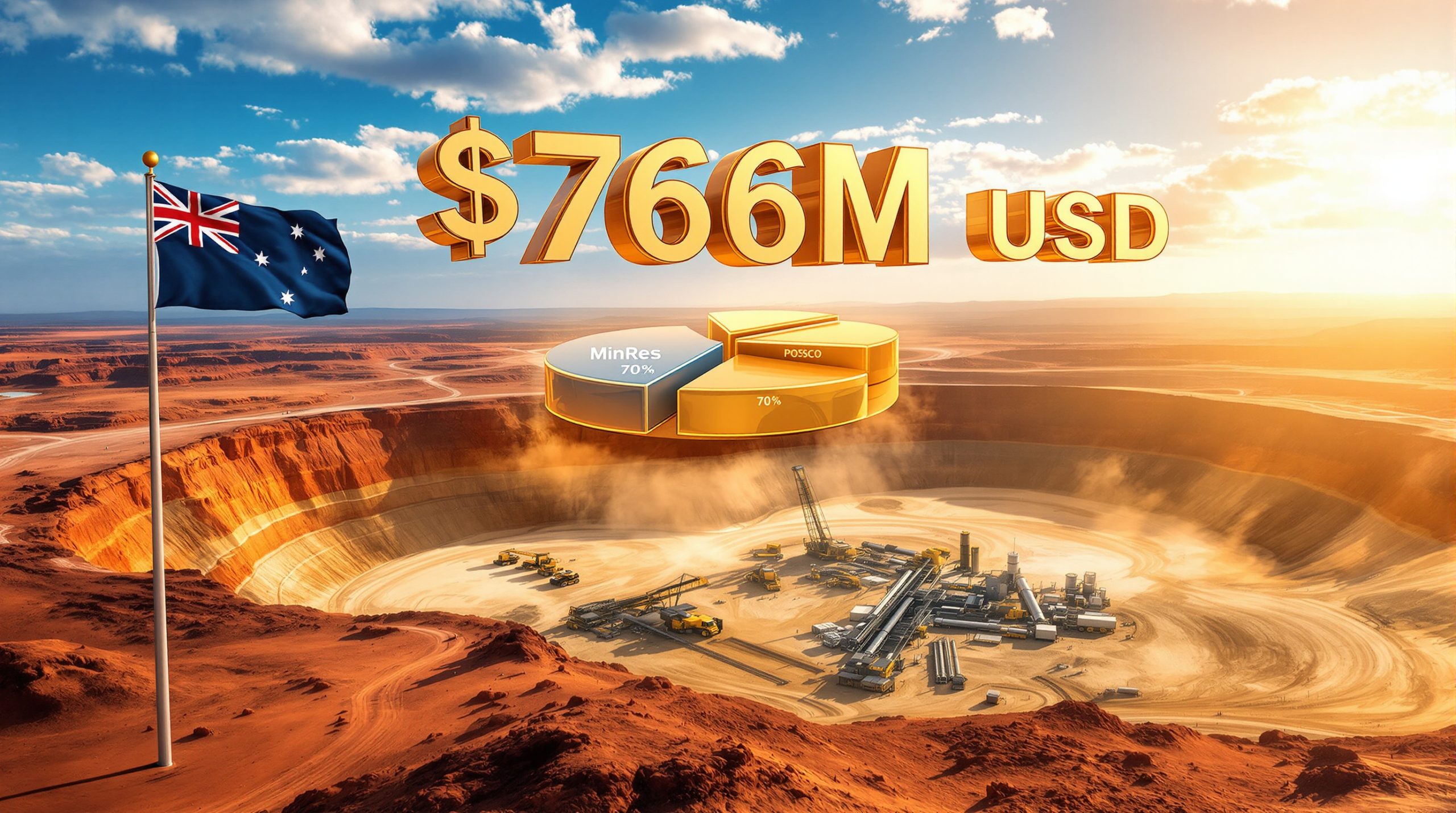How Is the US Securing Critical Mineral Supply Chains?
The United States government is actively restructuring its approach to resource security through direct investment in Australian critical minerals projects. This strategic pivot represents a fundamental shift in how America addresses vulnerabilities in essential supply chains. Rather than relying solely on market mechanisms, the US is now deploying government capital and influence to ensure access to materials deemed vital for economic and national security.
At the core of this strategy lies a suite of financial instruments designed to accelerate mining project development. These range from traditional debt financing with favorable terms to innovative hybrid models that combine loans with equity components. The flexibility of these offerings allows US officials to tailor support packages to the specific needs of individual mining operations, maximizing impact across diverse project types.
The Strategic Importance of Critical Minerals Partnerships
The US-Australia critical minerals partnership extends beyond simple commercial relationships, representing a cornerstone of America's resource diplomacy. This collaboration leverages Australia's stable democratic governance, robust regulatory systems, and abundant mineral resources to create resilient supply chains less vulnerable to disruption.
Key elements of this strategy include:
- Direct equity investments in promising Australian mining ventures
- Development of parallel supply chains outside existing Chinese-dominated networks
- Creation of bespoke financial instruments addressing mining sector challenges
- Integration of Australian resources into the US industrial manufacturing base
- Establishment of long-term government-backed purchasing agreements
What makes this approach particularly significant is its whole-of-government coordination. Rather than relying on disconnected initiatives from separate agencies, the US has mobilized expertise across the Department of Energy, Department of Defense, National Security Council, and International Trade Administration to create a unified strategy.
Why Is the US Investing in Australian Critical Minerals Companies?
Geopolitical Drivers Behind Resource Investments
The timing of this investment strategy is directly linked to China's recent export restrictions on rare earth elements and permanent magnets – critical components for clean energy technologies and defense applications. These Chinese restrictions, implemented as retaliation for US tariffs, have severely disrupted supply chains for American and European manufacturers, with automotive companies experiencing particular challenges.
This situation has created what resource strategists call a "mineral security imperative" – a recognition that modern economies cannot function without reliable access to specific materials. For the US, this imperative has transformed critical minerals and energy transition from a market concern into a national security priority requiring direct government intervention.
National Security Considerations
The national security dimensions of critical minerals access extend far beyond traditional defense applications:
- Reducing vulnerability to supply chain weaponization by strategic competitors
- Securing materials essential for advanced weapons systems and military technologies
- Building economic resilience against coercive trade practices
- Strengthening alliance networks through resource interdependence
- Protecting innovation capabilities that rely on specialized materials
The Australian partnership offers particular value because it allows the US to access needed resources without creating new dependencies on nations with potentially conflicting strategic interests. This approach exemplifies the emerging concept of "friend-shoring" – redirecting critical supply chains toward trusted allies rather than potential adversaries.
What Financial Models Is the US Offering Australian Mining Companies?
The US government has demonstrated remarkable flexibility in its approach to funding Australian critical minerals projects. Rather than applying a one-size-fits-all solution, officials are working with companies to craft funding packages suited to specific project needs, development timelines, and market conditions.
Innovative Financing Structures
| Financing Approach | Key Features | Strategic Benefits |
|---|---|---|
| Equity Investment | Direct ownership stakes using no-cost warrants | Provides capital while demonstrating long-term commitment |
| Traditional Debt | Government-backed loans with favorable terms | Reduces financing costs for capital-intensive projects |
| Hybrid Debt-Equity | Loans with "equity kickers" for upside potential | Balances risk while maintaining government influence |
| Prepaid Offtake Agreements | Advance payment for future mineral production | Guarantees supply while providing immediate capital |
| Defense Stockpile Purchases | Direct acquisition for strategic reserves | Creates guaranteed market for production |
The focus of these initiatives is bringing new production online by 2027, aligning with projected increases in demand for battery materials and other critical resources as electric vehicle adoption accelerates and clean energy infrastructure expands.
This timeline reflects sophisticated understanding of mineral development cycles. Many mining projects require 5-7 years from discovery to production, meaning investments made now will reach fruition precisely when material shortages are projected to become most acute.
Which Australian Mining Companies Are Engaging with US Officials?
Key Players in US-Australia Mineral Collaboration
Two Australian companies have emerged as early participants in discussions with US officials, representing different segments of the critical minerals value chain:
International Graphite
- Developing integrated graphite mining and processing at Western Australia's Springdale project
- CEO Andrew Worland participated in recent Washington delegation
- Project aims to supply battery-grade graphite materials essential for EV battery anodes
- Currently advancing through technical feasibility and financing stages
Cobalt Blue
- Advancing cobalt mining and refining capabilities in Western Australia
- CEO Andrew Tong seeking funding for integration into US supply chains
- Focused on providing battery-grade cobalt outside Chinese control
- Developing environmentally advanced processing technologies
These companies represent the vanguard of what could become a much broader initiative encompassing lithium, rare earths, and other strategic minerals. Their early engagement with US officials provides a template for how government support might be structured for the dozens of other Australian mining projects currently under development.
The companies engaged in these discussions participated in a 15-company Australian delegation that met with key US officials, including former mining executive David Copley who heads the US National Security Council's supply chain strengthening office, and Joshua Kroon, deputy assistant secretary for critical minerals at the International Trade Administration.
How Does This Compare to Other US Critical Mineral Investments?
Precedent-Setting Investments in Resource Security
The US has already demonstrated its willingness to take direct equity positions in domestic critical mineral companies through a series of strategic investments. Recent examples include:
- 5% stake acquisition in Lithium Americas
- 5% stake in Thacker Pass lithium project (joint venture with General Motors)
- Previous investments in rare earth producer MP Materials
- Strategic investments in semiconductor manufacturer Intel
These investments utilize no-cost warrants as the acquisition mechanism, providing the government with ownership without immediate capital outlay—a model that could be extended to Australian investments.
What distinguishes these investments from traditional government funding programs is their explicit connection to national security objectives. Rather than focusing exclusively on commercial viability, these investments prioritize supply chain resilience and technological sovereignty, representing a fundamental shift in how governments approach resource development.
This approach parallels similar initiatives in other strategic sectors, including semiconductor manufacturing, telecommunications infrastructure, and biopharmaceuticals. In each case, the US government has determined that certain capabilities are too vital to national security to be left entirely to market forces.
What Role Will Australia's Strategic Minerals Reserve Play?
Australia's Resource Diplomacy Strategy
Australia is positioning its newly established Australian minerals reserve as a diplomatic asset in upcoming discussions with the US. Prime Minister Anthony Albanese plans to leverage this reserve during his October 20 meeting with President Trump in Washington.
The reserve represents a novel approach to resource diplomacy, moving beyond traditional export relationships to create shared security assets among allied nations. By offering partners privileged access to stockpiled materials, Australia strengthens its geopolitical position while addressing genuine resource security concerns.
Strategic Implications
This resource cooperation creates multiple advantages:
- Potential for shared access to Australian mineral stockpiles during supply disruptions
- Integration with broader defense cooperation under the AUKUS security partnership
- Opportunity to coordinate resource policies among democratic allies
- Extension of mineral sharing arrangements to include the UK and potentially other partners
- Counterbalance to China's dominance in critical mineral processing capacity
The timing of these discussions is particularly significant as they coincide with the review of the AUKUS defense pact, which includes multi-billion-dollar plans for Australia's acquisition of nuclear-powered submarines. The mineral reserve offers Australia additional leverage in these high-stakes negotiations while strengthening the overall resilience of Western supply chains.
How Are These Investments Changing the Critical Minerals Market?
Market Transformation Through Government Backing
Government involvement in critical minerals is fundamentally altering market dynamics in several ways that benefit both producers and consumers:
- Risk Reduction: Government backing significantly lowers financing risks for projects that might otherwise struggle to secure capital
- Investor Confidence: Strategic importance attracts additional private capital alongside government investment
- Market Stabilization: Long-term offtake agreements reduce price volatility that has historically plagued specialty mineral markets
- Supply Chain Integration: Vertical integration from mine to manufacturing creates efficiency and security benefits
- Accelerated Development: Expedited permitting and financing processes reduce time-to-market for critical resources
For smaller critical minerals companies, government interest has transformed challenging financing environments into opportunities for rapid development and integration into strategic supply chains. Projects that might have remained stuck at the feasibility study stage for years can now progress toward production with greater certainty.
This transformation is particularly important for materials with relatively small markets compared to mainstream commodities like copper or gold. For these specialty minerals, price volatility and uncertain demand have historically deterred investment despite their strategic importance.
What Challenges Do Critical Minerals Projects Face Despite Government Support?
Despite increasing government backing, critical minerals projects continue to face significant obstacles that cannot be eliminated through financing alone:
Persistent Industry Challenges
- Small and volatile product markets creating valuation difficulties for investors and lenders
- Technical complexities in processing and refining operations requiring specialized expertise
- Long development timelines from discovery to production, often spanning 5-7 years
- Environmental permitting requirements and sustainability concerns requiring substantial investment
- Competition from established producers with scale advantages and lower operating costs
These challenges explain why government intervention has become necessary despite strong market demand for these materials. The commercial risks involved, particularly for first-movers in emerging mineral segments, often exceed what private capital is willing to bear without government support.
This reality highlights the limitations of pure market approaches to resource security. While government intervention cannot eliminate all risks, it can create conditions where private capital becomes more willing to participate in critical mineral development, ultimately creating more resilient supply chains.
How Does This Strategy Connect to Broader US-China Competition?
Resource Security in Great Power Competition
The US offers to buy stakes in Australian critical minerals companies represents one facet of a broader strategic competition with China that extends across multiple domains:
- Economic Security: Reducing vulnerability to economic coercion through supply chain diversification
- Technological Leadership: Securing inputs for advanced manufacturing and innovation ecosystems
- Alliance Strengthening: Deepening economic ties with democratic partners to create mutual interdependence
- Supply Chain Resilience: Building redundancy in essential material flows to prevent disruptions
- Industrial Policy: Supporting domestic manufacturing capabilities in strategic sectors
This approach mirrors similar efforts in semiconductor manufacturing, telecommunications, and other strategic sectors where China has established dominant positions. In each case, the US is working to develop alternative ecosystems less vulnerable to disruption or manipulation.
What distinguishes critical minerals from some other domains is the geological reality that resources are unevenly distributed across the planet. This creates natural bottlenecks that can be exploited for strategic advantage, making cooperative arrangements between resource-rich allies particularly important.
What Are the Implications for Global Critical Mineral Supply Chains?
Reshaping Global Resource Flows
The US-Australia critical minerals partnership signals a fundamental restructuring of global supply chains with far-reaching implications:
- Acceleration of "friend-shoring" across multiple resource categories beyond rare earths
- Premium pricing for materials from politically stable jurisdictions with environmental standards
- Increased investment in processing capabilities outside China to eliminate bottlenecks
- Development of parallel supply chains for strategic industries like defense and renewable energy
- Potential for new international standards and certification schemes validating supply chain origin
For mining companies, these shifts create opportunities to secure financing and offtake agreements based on geopolitical considerations beyond traditional market factors. Projects that might struggle to compete on pure cost metrics can now attract support based on their contribution to supply chain resilience.
This reordering of priorities represents a significant departure from the efficiency-maximizing globalization model that dominated resource development over recent decades. While economic efficiency remains important, it is increasingly balanced against security considerations in ways that will reshape investment patterns across the mining sector.
FAQ: US Investment in Australian Critical Minerals
What specific minerals are targeted by this US investment strategy?
The US is primarily focusing on battery metals (lithium, cobalt, graphite), rare earth elements used in permanent magnets, and other materials essential for clean energy and defense applications. These include minerals where China currently dominates global processing capacity and where supply constraints could impede technological progress in strategic sectors.
How does this investment approach differ from traditional mining finance?
Unlike traditional mining finance that focuses primarily on project economics and market conditions, these investments prioritize supply chain security, geopolitical considerations, and long-term strategic interests alongside financial returns. This creates opportunities for projects that might not meet conventional investment thresholds but offer significant strategic value.
Will these investments make critical mineral projects economically viable?
Government backing significantly improves project economics by reducing financing costs, providing market certainty through offtake agreements, and potentially accelerating permitting processes. This can transform marginally economic projects into viable operations by addressing the risk factors that traditionally deter private investment in specialty mineral markets.
How might China respond to these US-Australia mineral initiatives?
China could potentially respond by leveraging its dominant position in mineral processing, accelerating its own investments in resource-rich countries, or adjusting export policies for finished products containing these minerals. However, China's ability to monopolize critical mineral supply is limited by the global distribution of mineral resources and US policy impact on uranium and other critical minerals, along with the growing recognition of supply chain vulnerabilities among Western nations.
Furthermore, the US EXIM loan model established for critical mineral projects demonstrates America's commitment to building financial infrastructure that can support long-term investment in these strategic sectors, according to recent analysis from The Australian Financial Review.
Want to Be Alerted About the Next Major Mineral Discovery?
Discovery Alert's proprietary Discovery IQ model instantly identifies significant ASX mineral announcements, giving subscribers a critical edge in the evolving mineral security landscape. Explore how historic discoveries have generated substantial market returns by visiting the dedicated discoveries page and position yourself ahead of the market with actionable insights.




